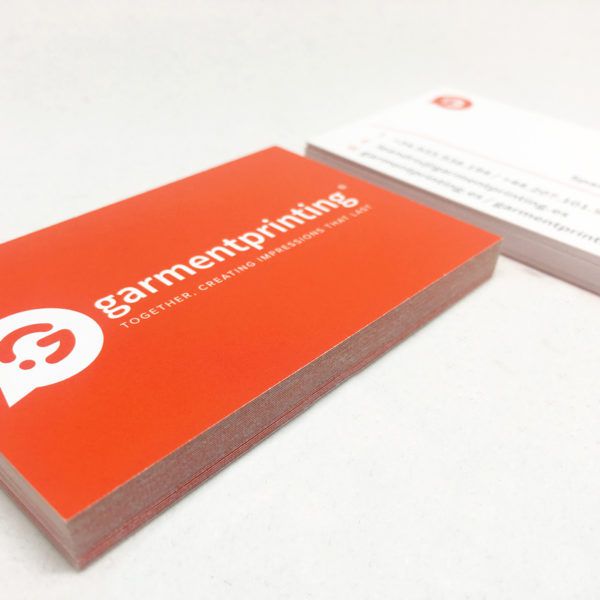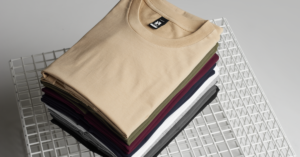Most business these days is done digitally and with this in mind, it’s easy to get the assumption that business cards simply don’t matter anymore – but if you think this then you’re wrong as they still have a lot to offer.
In this post, I’m going to tell you why printed business cards are still important for businesses and ow to use them effectively to make the most out of yours.
The first reason that they’re still important is, quite simply, because, as humans, our memories suck. How many times have you met someone and had a brilliant conversation with them only to forget their name and where they’re from once the conversation has ended?
A business card can save this embarrassment and it can be a road map to a world of new opportunities. It can land you a new job, it can bring in new business partnerships and, most importantly, it can help your business make more money – which is, after all, the reason why you got into a business in the first place.
Mitchell Friedman, the Associate Dean of Student Affairs and Career Development at Presidio Graduate School explained it perfectly by saying:
“When you meet a person at a business event, get their business card. Perhaps even write a note or two on the reverse side of the card to capture key points of your conversation while they’re still fresh in your mind. The bottom line here is to have a physical record of contacts you make so you can follow up as appropriate in conjunction with your broader job search / career development.”
Image this, you’re at a networking event and you’re on the lookout for potential new clients for your business. While at the event you notice someone who looks like the ideal client for you and you want to strike up a conversation and sell your businesses products / services to them – What do you do?
Introduce yourself and describe exactly what it is that you do.
But what comes next? In order to ensure that you can get future business from this potential client, you’d need to hand over your contact details and nothing looks more unimpressive than having to write down all of your contact details on a piece of paper or a napkin which they’ll then stuff in their pocket.
Not only does a business card prevent this from happening, it makes you look more professional and appealing to the client while also saving you time by not having to fumble around looking for a pen and paper to scribble an email address and telephone number on. It also gives the impression that this isn’t your first networking event and you’ve been to these before and know what they’re all about.
First impressions are incredibly important in the business world and that’s why you need to make sure that nothing lets you down. Business cards also give the potential client something physical to refer back to at a later date when they finally decide to buy your products or services.
Writer Sarah Brooks at Successful Blog explains:
“Business cards put a face to a business – when meeting someone new, handing them your business card (preferably with your photo on it) will help keep your business in the back of their minds. Though they may not need your service today, there may come a time when they do, and hopefully they will be able to pull out your business card and call verses trying to remember your company name and searching the web.”
The business card acts as the physical object that your potential customers can carry around with them at all times. It keeps your brand from just being a name that gets floated around and forgotten with time.
However, not everyone believes that business cards are essential when you’re trying to attract new clients at events. In fact, Ilya Pozin, writer for Forbes and INC, actually argues that business cards have lost their edge thanks to advancing technology:
“As for me, I haven’t had business cards for many years. Instead, I make a point to ask my connection to email me. (When I respond, I include my full contact information). It’s become normal to see people at networking events using their phones to collect information right there on the spot. Fast-forward a few years, it won’t be surprising to find Google Glass-wearing techies exchanging contact information by looking at each other.”
It’s no secret that technology (more specifically smartphones) have made the act of sharing information much, much easier. You can email someone while you’re meeting them with a few quick taps on your handset. You can even download apps which allow you to share your information by just touching phones together (providing both devices are NFC enabled).
The question from here would have to be: Why bother with business cards if this technology can do all of this for you?
The answer goes back to first impressions. Networking is designed to create meaningful connections and technology has a way of coming across as impersonal.
For me, if I’m talking to someone and they decide to tap away on their phone, it would put me off as this appears rude. The art of making meaningful contacts is in the eye-contact and the conversation that you’re having with the other person. If you’re asking them to download apps to share your information, immediately asking for their email address or looking down at your phone is giving off the wrong impression.
Technology shouldn’t be instantly dismissed, though. There are some excellent apps (such as Evernote) which allow you to scan the business card and collect all of the information and store it on your phone so you can always keep it with you.
In short:
Business cards are cheap, portable and extremely easy to give away, so there’s really no reason why you shouldn’t have them. Even in a world of Facebook, LinkedIn, Gmail, and Twitter – people still expect to give and receive business cards when they’re at events. It shows how professional you and your company are.
How can your business cards help you to stand out?
Choosing what goes onto your business card isn’t an art – it largely depends on what kind of business you’re in (or what kind you want to be in).
Here are some tips on how your business card should look:
Keep clutter down to a minimum:
If you have a lot of information on your business cards, the important parts can get lost in all of the clutter. You need your name, company name, job title, and what your company does.
It’s also essential to list your business phone number, mobile phone number (if applicable), work email, website, and even the location of your business (if this is important to know).
Leave the back blank:
If you’re creative or if you’re in a creative industry then you can experiment with having different styles and logos on the back of the business card. However, it’s usually better to keep things basic.
Writer, John Williams from Entrepreneur goes as far as recommending that you keep the back blank:
“How often will people see the back of the business card? Traditional card store modes assume that side is blank. If you do wish to put copy on it, be sure the information is of a supplemental nature: e.g, your company’s mission or tag line. While business cards should promote your brand identity, they shouldn’t be confused with advertising.”
Use white as the base colour of your card:
By using white as your base colour, it makes your card easily visible but it also means that you can write notes or additional information on the front and the back of the card.
Stick to the standard size of 2″ by 3.5″:
Creating a different sized and shaped business card may seem like an excellent way to stand out from the crowd – but it’s not. Traditional business cards are designed to fit perfectly inside someone’s wallet or purse so if yours is bigger than this then it’s quite likely that your card will find its way into the bin.
Remember that you and your conversation will make the lasting impression – not the size or shape of your card.
Use your picture on your business card:
Imagine you go to a convention, you receive 55 different business cards – how do you remember who gave you which one? By putting your picture on the business cards, you’re creating an easy way to get remembered and it might also help to give you the edge over the competition. Other things that you could include on the card are:
QR Codes:
QR codes are an excellent way to direct people to a web page which is filled with useful information that would be impossible to fit on a card. It does take up some space so make sure that it doesn’t replace the important information before deciding to go with this option.
Spend more on quality:
Basic business cards are cheap and they look and feel cheap. By handing out one of these you’re giving the impression that you and your business are also cheap and you’re willing to cut corners to save on the cost and deliver sloppy work. A quality business card, while it may cost you more, will give the impression that you’re willing to go above and beyond to secure your clients and therefore you’ll do the same to impress them and keep them.
Choose the right font:
Keep your fonts to 12 points or larger and make sure that they are easily readable. You can play about with the font on the card but if you’re an event the slightest bit concerned about whether or not they can be easily read – choose a different font!
Get professional help:
You can also hire someone who’s job is in design to help you create the business cards. Graphic designers know how important business cards are and they also know how to work within the confined space. Best of all, their creative minds allow them to create something clever, eye-catching and professional.
Business card best practices:
With the right card stored in your pocket – you’re ready to get out there and network. Here are some of the best practices that make sure your business card doesn’t go to waste. After all, what’s the point in spending time and money creating the perfect business card if they’re only going to end up in the bin?
Be prepared:
Sounds obvious, doesn’t it? But forgetting your business cards is something that has happened to all of us and you never know when that next contact might show up.
Always make sure that you have your business cards on you. Always. Even if you’re down the pub with mates – you might just end up making a connection with someone. Always have a couple stored inside your wallet or purse just in case.
Be selective:
You may have just bought a thousand business cards but that doesn’t mean that you have to give all of them away to get your money’s worth. To get true value for the money that you’ve spent you need to identify the right clients and ensure that they’re the ones who receive your business cards.
Handing out your card to everyone will ensure that a lot of them will end up in the bin as they’re not relevant to the person that you’re handing them out to. Also, you might not have a card to hand to give to the perfect client if you’ve already given them out to the wrong people.
Be interested:
If you’re giving out your business card, try getting theirs in return. Most of the time, if you hand out your card the other person will reciprocate, but if they don’t then make sure that you ask them for theirs. Showing your interest in them will only increase their interest in you – it also gives you a name and contact details to make a follow up after the event has finished.
Be proactive:
When you get their business card, look them up on LinkedIn or other social media channels. By doing this, you’re getting to know more information about them and it’ll also help you to put a face to the name that’s on the business card weeks later.
In our ever-changing world, there are plenty of ways that you could force your way onto people’s contact lists or gather information about them. However, business cards are still an incredibly valuable tool to use in the business world.
They’re cheap, efficient, and they deliver all of the information that you need to give to potential clients. If you’re looking to get some business cards printed – fill out the quote form below and we’ll deliver a personalised quote to you within 15 minutes.





